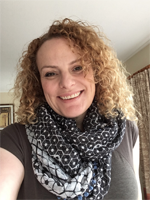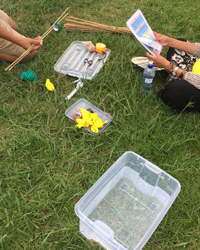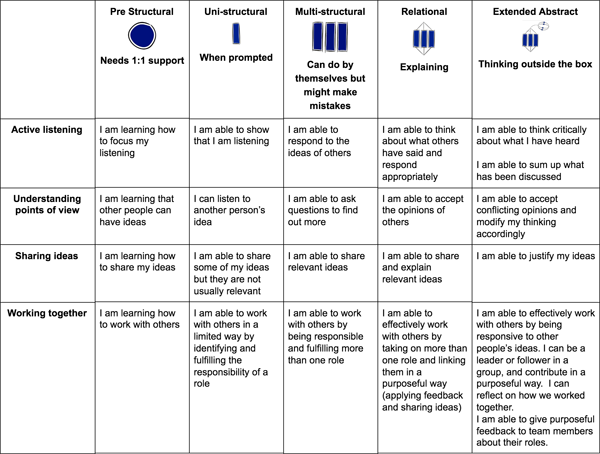Chantelle Rich, a year 5/6 teacher from Henderson North Primary, is one of two teachers leading a Teacher Led Innovation Fund (TLIF) project across a cluster of six schools for the past 18 months.
In this blog, Chantelle shares her learning through supporting collaborative innovative STEAM inquiries using Universal Design for Learning (UDL) principles.
What is STEAM?
STEAM is an acronym for Science, Technology, Engineering, the Arts, and Maths. It’s an integrated approach to teaching and learning, using hands-on processes which focus on self discovery, building tuakana teina relationships, and exploring creativity.
How did I become involved in this project?
The WAPA 2020 cluster principals met in 2015 to look at how they could refocus on building students’ curiosity and excitement in learning across the curriculum. That’s where I became involved as my principal, Irene Ogden, knew this was my area of expertise and interest.
As a former IB Primary Years Programme teacher I have experienced the benefits of using an inquiry-led transdisciplinary framework. In PYP students are challenged to think for themselves and learn through real-life contexts that excite them and pique their curiosity.
I took on the role because I am interested in engineering and technology as well as developing cross-curricular approaches to teaching. Additionally, I recognised that this was an opportunity to grow and nurture my leadership skills.
What do I consider the main strengths of STEAM?
It is the A in STEAM over STEM and the cross-curricular links that are its main strengths. The arts and creativity are what the students and perhaps the teachers have been craving. Through using UDL, students have more say in how they demonstrate what they have learnt and this is where their imagination, the arts, and creativity come into play. Students are far more involved as a result and take pride in what they have personally achieved.
STEAM draws areas of the curriculum together allowing students to transfer skills and make connections. There is a clearer purpose for tasks, especially in maths and in writing as they have a real-life reason and audience.
In addition to motivation and academic benefits, the increase in hands-on activities has produced students with better fine-motor and technical skills. It’s great for building relationships and giving children opportunities to show another side to their personality and get to know each other better. Lastly, though very importantly, it also saves time.
How has UDL changed your planning and teaching?
Before I was introduced to the term UDL I was already going down that road. It has many crossovers with good teaching practice in PYP, ESOL, and learning support.
In the past, I used UDL principles to support English language learners and students with specific education needs. Now, I use it for a wider variety of learners with a range of social, emotional, and cultural needs.
What was the STEAM inquiry and what has been the impact on student achievement?
I’ve completed two STEAM inquiries over the course of the project. It took a very long time to come up with my first inquiry and for at least 6 months I believe I inquired into what a meaningful inquiry might look like for me and my learners.
My initial inquiry was finding out how I could use STEAM to target the development of active vocabulary. It was clear from research that students from disadvantaged areas have poorer vocabularies so I hoped to address that using STEAM. Through deliberate acts of vocabulary teaching such as pre-teaching, word walls generated by students and flashcards, students did start to actively use target vocabulary. Students experienced more and had increased access to rich vocabulary. I saw an improved awareness of register in writing when students wrote “like a scientist”.
A benefit of working in groups on hands-on projects has given the students more opportunities to talk on topic and grow their active vocabularies. Anecdotally other teachers have commented on their good vocabulary when speaking with them.
This led on to my second inquiry into how I could use SOLO to deepen students’ understanding of quality writing. Using SOLO rubrics was initially quite new to me and to the students. We wrote them together with the students, using them to plan writing a science report.
Example of SOLO rubric – Collaboration
The students who benefited most from this were my middle group of students rather than my target students who were the lower achievers. This was because it was quite sophisticated and the middle ability students were ready for this. Some students began with a paragraph and by the end of the year they had moved to writing several pages. They drafted their work in Google docs and received regular feedback from myself and their peers.
Although my inquiries were linked to writing, the biggest impact on data has been in maths. I believe their problem solving skills improved due to STEAM activities.
For my school?
At Henderson North I am also the in-school Kahui Ako teacher focussing on literacy. This has enabled me to raise the importance of vocabulary and share strategies to grow vocabulary. Together with my literacy leader colleague in the junior school, we have led whole-school workshops, changed how we report OTJs to include discrete marks for vocabulary, introduced a marking matrix, and brought in outside teacher trainers to work with groups of teachers over three terms.
Throughout the cluster?
Twelve teachers across the six schools have been directly involved in STEAM inquiries. All teachers report similar shifts in student engagement and improved attendance. Teachers and their classes are all at different places with some more confident in applying UDL principles in their STEAM projects. All teachers are on a SOLO journey, seeing the benefits of assessing students around the shifts they would like to see. All teachers report major shifts with their target students, many of whom are Māori and Pasifika students.
What evidence do we have to support this?
I’ve used SOLO rubrics for my own class, as have most other teachers in the cluster. This has allowed us to see the shifts not just up one level but up two levels.
We’ve also used discrete testing, class surveys, learning maps, OTJs, and National Standards data where relevant. We’ve had conversations with other teachers at our schools and with parents. We’re hearing lots of positive stories about students being more motivated to do STEAM activities at home and talking about their learning.
How have I found working as a project lead teacher in this TLIF project?
I’ve really enjoyed it and I’m sad that it is coming to an end. I’ve totally loved working with Heather Kluit, the other project lead teacher from Flanshaw Road School. We work well together and designed and delivered six workshops for STEAM teachers, which has been a really fun experience. In addition we presented at ULearn 2017 and are growing as middle leaders together.
What issues have I had while leading this project?
As a cluster it has worked really well. The hardest part is that the teachers in the six schools are at different stages of their STEAM/UDL journey. However, Heather and I apply UDL principles in our workshops so it hasn’t really been a big issue. We’ve learned a lot from each other.
On a practical level, as a full-time classroom teacher in Auckland it has been challenging to balance the workload, and get continuity with relievers to release me for this and other projects I am part of.
What have been the benefits of working with experts?
Earlier this year we had Rawiri Waru, a successful Māori scientist, tell us his story, growing up as a Te Reo speaker and how a teacher made science relevant to his world. I often think about Rawiri in relation to my students. Where’s the "Rawiri" in my class? How can I enable them to come through and discover their success.
I’ve also benefited hugely from being able to work alongside teachers in our cluster who are focusing on Māori Achieving Success as Māori (MASAM). They have enabled me to see the relevance of STEAM to our Māori and Pasifika learners through another worldview and to focus on developing warm relationships.
How have STEAM projects impacted on my school?
There has been a big shift in teaching in a more integrated way and we are making moves to foster this further through our curriculum mapping process for the coming year. As the curriculum coordinator, I am encouraging both the literacy and maths teams to work together to make meaningful links with concept planning and events happening locally and globally.
This year we had electives for the senior students who took part in “passion projects”. Hopefully, this will be expanded next year across the whole school.
We are getting more teachers excited about STEAM with teachers in the junior school asking for STEAM equipment. We have bought equipment that suits the development of fine motor skills. In addition we are seeking new staff with a passion for STEAM.
Students who were in my class last year want to come back to do activities because they got so much enjoyment from it. We have set up equipment to involve students who arrive early for school. Wet play had been an issue in the past but now students will happily do STEAM activities.
How has this project benefited other teachers in the cluster and further afield?
The benefits have been many and varied but highlights are:
- talking to teachers in our Kahui Ako about using STEAM as a springboard for writing
- visiting each other’s schools and classes
- sharing what we have learnt at joint cluster ToDs
- growing collections of high and low tech resources
- a network of teachers who ask each other for advice, share resources, and links to readings
- time to talk about inquiries and STEAM success and failures
- promotions/extra responsibilities for participants as they have grown their leadership capacities
- trying and testing variety of media to share materials and plan collaboratively (google docs, slides etc)
- changes in the way in which we do inquiries as a school to make them more collaborative.
How has this project impacted on my own professional growth?
- I’ve brought my managerial skills from the classroom to work with adults and I’ve grown as a facilitator and presenter.
- I’m thinking more about change and how to lead change in a school.
- I know how to delegate more from the back. I don’t feel the need to be doing stuff all the time. It’s learning how to step back and let others have a go.





